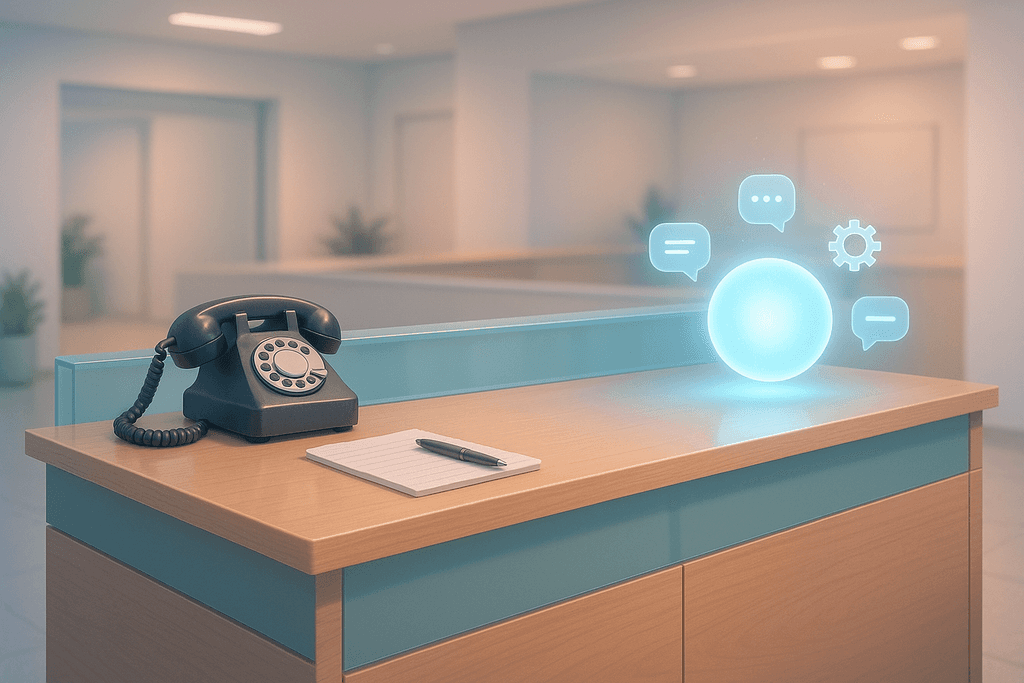Customers don’t wait. As a small business owner, you need a plan that gives people fast, accurate answers at any hour — without chaining you to your inbox. This guide shows how to deliver always‑on support with an AI chatbot, smart automation, and seamless handoffs to humans.
Why fast responses matter
Customer response time directly influences satisfaction and revenue. In recent research, 90% of customers say an “immediate” reply is important when they have a service question, and 60% define immediate as 10 minutes or less (HubSpot, 2022). (blog.hubspot.com)
Speed matters for sales follow‑up, too. Firms that contact a web lead within an hour are nearly seven times more likely to qualify it than those waiting longer — and more than 60× more likely than those waiting 24+ hours (Harvard Business Review, 2011). (hbr.org)
On the flip side, poor experiences drive churn: a 2025 trends analysis found 63% of consumers are willing to switch to a competitor after just one bad interaction (Zendesk, 2025). (zendesk.com.mx)
What “always‑on” support looks like
“Always‑on” means your business can acknowledge, triage, and resolve common requests instantly — 24/7 — while escalating nuanced issues to a human. Done well, this blends an AI chatbot for instant answers with automated customer service workflows and a clear human handoff.
- Fast first response on any channel (seconds for chat, minutes for messaging/email).
- High self‑service resolution for FAQs; smooth human handoff for complex, emotional, or edge‑case issues.
- Consistent, accurate answers powered by your knowledge base and policies.
AI is here to help, not to replace your team. Only 26% of consumers say they trust organizations to use AI responsibly, and many worry about a lack of human agents when AI is used — so keep the path to a person obvious (Qualtrics, 2025). (qualtrics.com)
Build your 24/7 setup (step‑by‑step)
1) Inventory the questions customers actually ask
- Export recent emails, chats, DMs, and contact‑form messages.
- Bucket them into themes: pricing, product info, availability, shipping/returns, appointments, troubleshooting, and policies.
- Note the top 25 that recur; write concise, policy‑accurate answers.
2) Choose your channels and hours
Pick where customers already reach you (site chat, SMS, Instagram/Facebook messages, email, WhatsApp, voice). Publish business hours, but make it clear your chatbot provides 24/7 customer support for common needs.
3) Stand up your AI chatbot
- Connect your knowledge base, product/services pages, pricing, and policies.
- Write “guardrails” (topics it should not answer), and escalation triggers (e.g., billing disputes, safety issues, cancellations).
- Design a friendly greeting and menu that reflects your brand voice.
4) Wire up handoffs and alerts
- Route high‑value or high‑risk intents to a person; capture contact info if after hours.
- Set @mentions or mobile push for urgent keywords (e.g., “refund,” “broken,” “urgent”).
- Offer scheduled callbacks for off‑hours escalations.
5) Integrate your stack
Connect chat to your CRM, calendar, ticketing, payments, and email marketing so answers can trigger actions (create a lead, book an appointment, start a return). If you’re using Small Business Chatbot, explore its popular integrations to automate more of the journey.
6) Test, then tune weekly
- Dry‑run common conversations; verify answers, tone, and links.
- Review unresolved or “I need a human” cases; improve training content.
- Refresh seasonal policies (holiday shipping, closures, promo fine print).
Keep answer snippets short. When the question is complex, summarize options, then offer a one‑click handoff to a person. This lowers abandonment and protects satisfaction.
Balance automation and the human touch
AI chatbots excel at speed and consistency, but humans excel at empathy and judgment. Customers want both. A practical model is “bot‑first, human‑available.” Route routine questions to automation; make it effortless to reach a person for complex or emotional issues.
When to hand off to a person
- Money matters: billing disputes, high‑value orders, cancellations, refunds.
- Safety, legal, and compliance topics.
- Repeated confusion (customer asks the same thing twice) or visible frustration.
- Accessibility needs or language barriers.
Good news: AI doesn’t just deflect — it can boost your team, too. In a large‑scale field study, giving customer support agents an AI assistant increased issues resolved per hour by ~14% on average, with even bigger gains for newer staff (NBER, 2023). (nber.org)
Frontline teams are feeling the squeeze — agents spend only 39% of their time actually servicing customers, but 93% of service pros at organizations using AI say it saves them time (Salesforce, 2024). (salesforce.com)
Metrics and practical benchmarks
Five KPIs to watch
- First response time (FRT): speed to first reply/acknowledgment by channel.
- First contact resolution (FCR): % resolved in one touch (bot or human).
- Containment rate: % of conversations resolved by automation without human help.
- CSAT: quick post‑interaction rating (“Did this solve your issue?”).
- Hand‑off quality: % of escalations that include context so customers don’t repeat themselves.
Practical targets (start here, then refine)
- Chat: greet in seconds; aim to provide an answer within a minute where possible.
- Messaging/SMS: under 10 minutes for simple requests — aligned with what many customers consider “immediate.” (HubSpot, 2022). (blog.hubspot.com)
- Email: confirm receipt instantly; substantive reply same business day for typical cases.
- Escalations: clear SLA (e.g., “we’ll call you within 2 business hours”).
Tip: Review these weekly with your team. Tighten goals after you stabilize accuracy and coverage.
Tools and integrations
Choose tools that your team can actually run. Look for: easy training on your content, guardrails, analytics, and one‑click integrations to your CRM, calendar, and help desk. If you’re evaluating platforms, Small Business Chatbot is built for small businesses and can reflect your brand tone while answering FAQs, booking, and capturing leads. See how it performs for real users in our customer reviews.
| Question type | Automate? | Notes |
|---|---|---|
| Hours, location, pricing, availability | Yes | Keep answers short; add links or images only if necessary. |
| Order status, returns, booking | Yes + actions | Trigger workflows (create ticket, start return, schedule appointment). |
| Technical troubleshooting | Hybrid | Bot suggests steps; offer human handoff if steps fail. |
| Complaints, special cases | Human | Prioritize empathy; route to senior agents. |
Research highlight
- “Immediate” matters: 90% say an immediate response is important; 60% define it as under 10 minutes (HubSpot, 2022) [1]. (blog.hubspot.com)
- Agent assist works: Generative‑AI guidance increased issues resolved per hour by ~14% in a 5,179‑agent field study (NBER, 2023) [2]. (nber.org)
- Customer patience is thin: 63% will switch brands after one bad experience (Zendesk, 2025) [3]. (zendesk.com.mx)
- Leaders expect more automation: Many CX leaders expect the majority of interactions to be resolved without humans in the next few years (Zendesk, 2025) [3]. (zendesk.com.mx)
Frequently asked questions for always‑on handling customer questions when you’re away
- 1) What should I automate first?
- Start with high‑volume FAQs (hours, pricing, product/service info, order status, simple troubleshooting). These provide quick wins and reduce workload immediately.
- 2) How do I keep answers accurate?
- Write short, source‑of‑truth snippets and store them in one place. Update them whenever policies change. Schedule a weekly 15‑minute review of the top 25 questions.
- 3) When should a bot hand off to a person?
- Escalate on signs of frustration, repeated questions, sensitive topics (billing, legal, safety), or VIP/high‑value customers. Always show an easy path to a human — consumers worry when AI hides people (Qualtrics, 2025). (qualtrics.com)
- 4) Do I need a developer to set this up?
- No. Modern tools let you paste your site URL, import FAQs, and add guardrails without code. You’ll get better results if you assign someone to own content quality and metrics.
- 5) Will AI hurt customer satisfaction?
- It shouldn’t. In research with thousands of support agents, AI assistance increased productivity without harming customer sentiment — and helped newer agents most (NBER, 2023). (nber.org)
- 6) Is 24/7 chat enough to cover social media and email?
- Use auto‑acks everywhere, then route into one queue. For social DMs and email, aim for under 10 minutes for simple replies during business hours; send clear next‑step timelines after hours (HubSpot, 2022). (blog.hubspot.com)
- 7) Where is this headed?
- Industry analysts expect chatbots to become a primary service channel for many organizations in the next few years — plan now so your team leads, not lags (Gartner, 2022). (gartner.com)
References
- [1] HubSpot (2022). 14 Customer Loyalty Trends to Follow in 2022. blog.hubspot.com
- [2] NBER Working Paper 31161 (Brynjolfsson, Li, Raymond, 2023). Generative AI at Work. nber.org
- [3] Zendesk (2025). CX Trends 2025 newsroom summary. zendesk.com.mx
- [4] Salesforce (2024). Customer Service Statistics 2024. salesforce.com
- [5] Harvard Business Review (2011). The Short Life of Online Sales Leads. hbr.org
- [6] Gartner (2022). Press release: Chatbots become a primary service channel by 2027. gartner.com
- [7] Qualtrics (2025). Increased Expectations, Declining Loyalty — 2025 Consumer Experience Trends. qualtrics.com
Ready to be always‑on?
Deliver fast answers day and night — and keep the human touch when it matters.
Launch a 24/7 chatbot on your site
Prefer to see proof first? Check our customer reviews.



